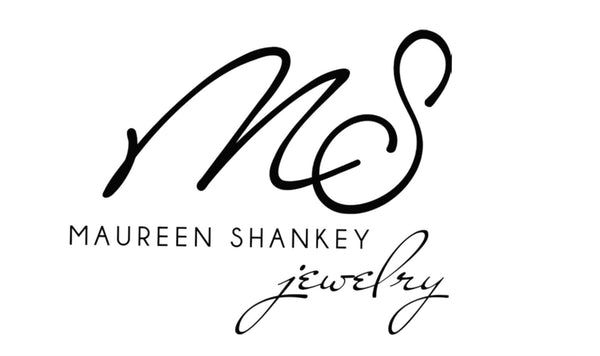Glossary
Cast jewelry sections begin with a handmade mold (I use plaster, sand, stone, or cuttlebone), and molten metal is poured into it.
Electroforming is the process of depleting metal from a sheet of metal by hanging it in an acid bath and depositing it onto the desired piece via an electric current run through the acid bath and the desired art piece. I electroform with copper to accent jewelry and to build vessels.
Fabricated jewelry means it is made by soldering sterling silver or gold wire or sheet segments into position.
Fine Silver is at least 999 parts out 1,000 pure silver, used for some complex chains and for repousse, as it is very malleable. The process of adding raised and recessed areas increases the strength of the piece. They are stamped “999” or “Fine Silver”. Both are correct.
Fold forming is a technique whereby metal is folded, repeatedly forged and annealed, and unfolded; at which stage it has a dramatic three dimensional form and is stronger than the original sheet.
Forged jewelry is hammered into shape.
Keum boo an ancient Korean art by which 24 karat gold is fused at the atomic level to another pure metal via heat and pressure. When gold accents are desired on sterling silver, the silver is first heated and dipped in hot acid many times to remove the alloy in the surface. This leaves a layer of fine silver to which the gold can be applied.
Kumihimo, which literally means "gathered threads", is an ancient and complex Japanese art form in which many strands of fiber (in some cases including gems, pearls, and other beads) are braided with the use of traditional specialized looms. The necklaces we braid have 8 strands and the loom we use is called a marudai.
Pearls Freshwater pearls, South Sea pearls, and Tahitian pearls are all types of pearls that are highly valued for their beauty and luster. They share similarities but also have distinctive characteristics.
Freshwater Pearls are formed in freshwater mollusks, usually Hyriopsis, in lakes and rivers, most often in China. They come in a wide range of colors, including white, pink, lavender, and metallics. They are known for their affordability as each mollusk can produce up to 40 pearls each harvest and they grow more quickly than salt water pearls.
Saltwater pearls are referred to as South Sea or Tahitian
South Sea pearls are produced by the Pinctada maxima oyster, usually found in the waters of Australia, Indonesia, and the Philippines. They are known for their large size, usually 9mm to 20mm with some rare pearls larger than 20mm. These pearls have a remarkable luster and satin-like sheen, which is the result of their thick nacre. Natural colors include white, silver, pink, and golden hues. They are more valuable than freshwater pearls as each oyster can produce only 3 to 4 pearls in a lifetime and the pearls grow slowly.
Tahitian pearls, often called black pearls, are produced by the Pinctada margaritifera oyster found in French Polynesia. They come in black, gray, green, blue, and peacock shades and exhibit a rich and unique iridescence which is highly prized. They are known for their size and have a thick nacre giving them excellent durability. Tahitian pearls range from 8mm to 17mm with larger pearls considered exceptional. They are more valuable than freshwater pearls as each oyster can only produce 3 to 4 pearls in a lifetime and the pearls grow slowly.
Repousse, which literally means "pushed back", refers to ornamentation in which the design has a raised or relief design hammered in from the backside of the piece.
Sterling Silver is 925 parts out of 1,000 pure silver, 75 parts out of 1,000 are an alloy to increase the strength, used for most jewelry. Sterling silver jewelry can either be stamped “925” or “Sterling Silver". Both are correct.
